Arizona boasts a rich tapestry of wildlife, and among its diverse avian inhabitants, there are 16 captivating species of owls that call the state home.
Each species contributes to the unique ecological balance of Arizona’s landscapes, from the iconic Great Horned Owl to the elusive Elf Owl.
As nocturnal predators, these owls navigate the varied habitats of deserts, woodlands, and mountains, showcasing remarkable adaptations and behaviors.
This exploration will delve into the distinct characteristics, lifestyles, and conservation significance of these 16 owl species, providing a glimpse into the fascinating world of Arizona’s nocturnal raptors.
Join us on a journey through the diverse ecosystems that harbor these feathered enigmas, revealing their roles and importance in the enchanting natural heritage of the Grand Canyon State. Stay sharp.
16 Owls Of Arizona
Explore the diverse owl species residing in Arizona, each with unique traits and adaptations.
From the majestic Great Horned Owl to the diminutive Elf Owl, discover their lifestyles, habitats, and the conservation efforts crucial for their survival in the rich landscapes of the Grand Canyon State.
1. Great Horned Owl
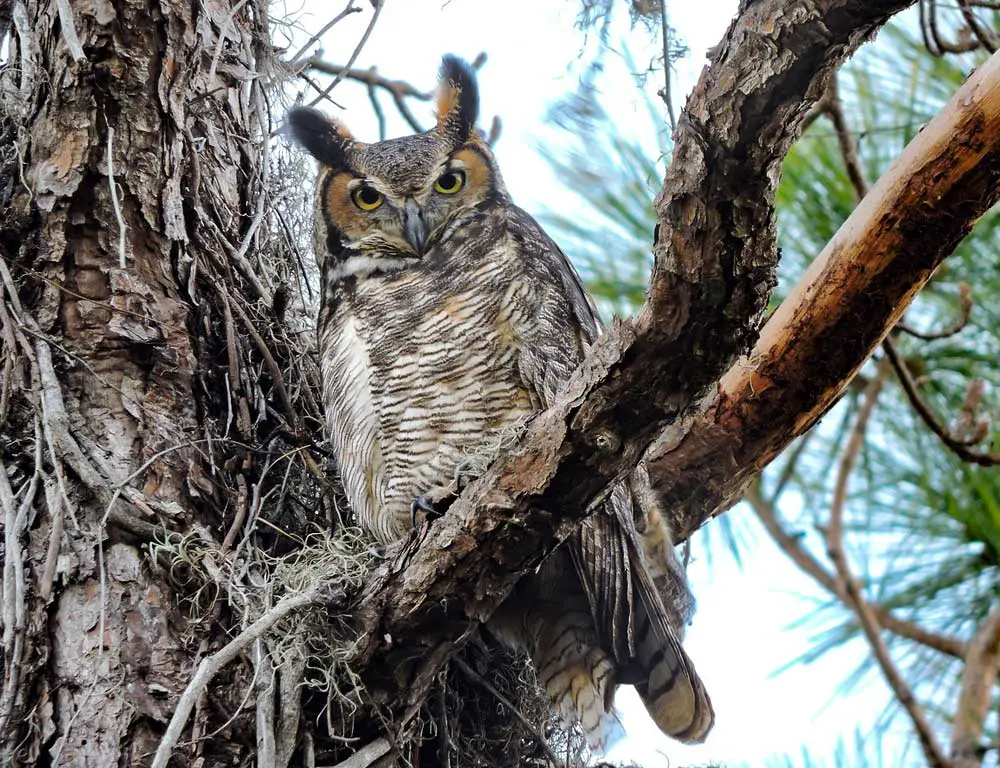
- Scientific name: Bubo virginianus
- Life span: 5-15 years
- Size: 18-25 inches
- Weight: 2-5.5 pounds
- Wingspan: 3.3-4.8 feet
- Status: Common
The Great Horned Owl, a prominent nocturnal predator, is a master of adaptability and is found throughout Arizona. With its distinct “horns,” which are actually tufts of feathers, it exhibits a majestic appearance.
These owls have a diverse diet, ranging from small mammals to birds and even larger prey like rabbits. Their exceptional vision and powerful talons make them formidable hunters.
Great Horned Owls are known for their adaptability to various habitats, from forests to deserts and urban areas. They are skilled nest-builders, often utilizing abandoned nests of other large birds.
These owls are also known for their hooting calls, which are frequently heard during their nocturnal activities. Despite their widespread presence, their elusive nature and nocturnal habits make them more often heard than seen.
2. Barn Owl
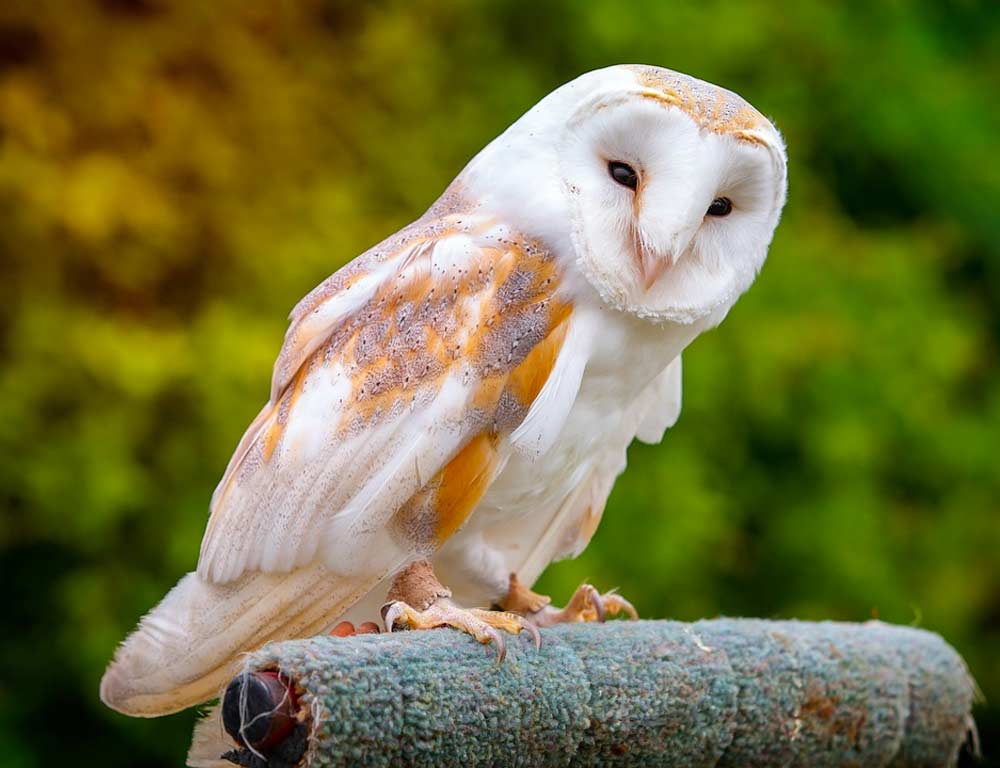
- Scientific name: Tyto alba
- Life span: 2-5 years
- Size: 12-16 inches
- Weight: 14-24 ounces
- Wingspan: 42-43 inches
- Status: Common
The Barn Owl is a unique and striking species known for its heart-shaped facial disc and ghostly appearance.
It prefers open habitats like grasslands and agricultural areas. Unlike the Great Horned Owl, Barn Owls are more specialized in their diet, primarily feeding on rodents.
Barn Owls are proficient hunters in low light conditions, relying on their exceptional hearing to locate prey. They often roost in abandoned buildings, barns, or other man-made structures.
Their silent flight and keen sense of hearing make them efficient night hunters. Despite their common status, habitat loss and pesticide exposure can impact their populations.
3. Burrowing Owl
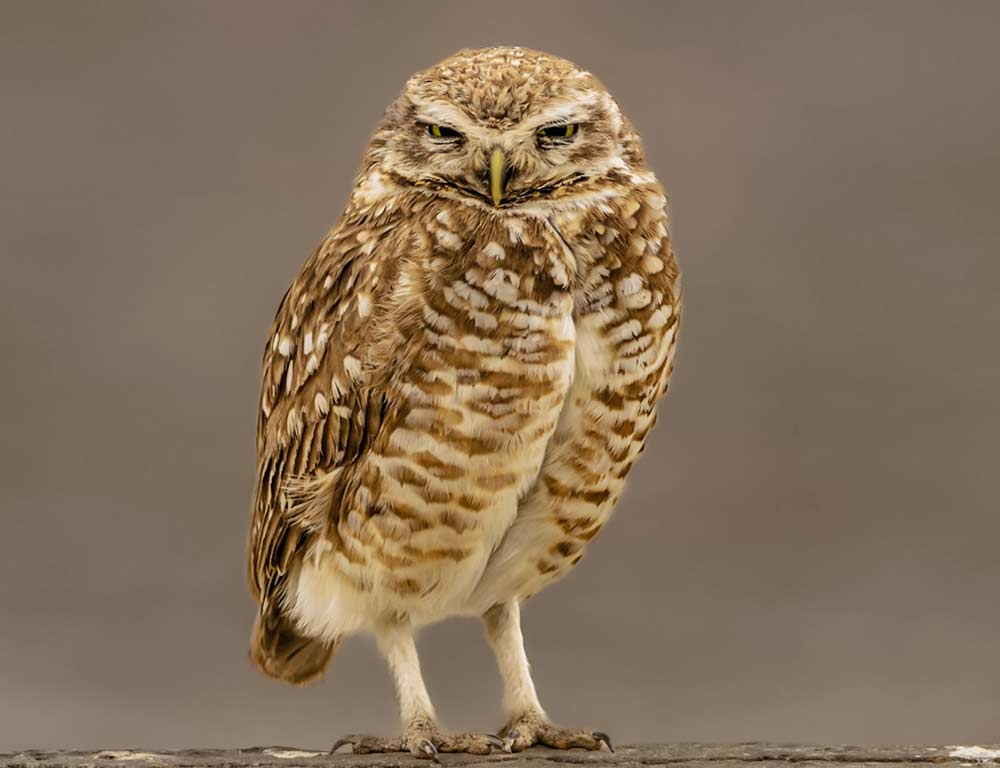
- Scientific name: Athene cunicularia
- Life span: 6-8 years
- Size: 7.5-11 inches
- Weight: 6-7 ounces
- Wingspan: 21-24 inches
- Status: Threatened
The Burrowing Owl is a ground-dwelling species that nests in burrows, often utilizing abandoned prairie dogs or tortoise burrows. They have distinctive long legs and a spotted appearance.
Burrowing Owls are diurnal, meaning they are active during the day and display interesting behaviors such as head-bobbing.
These owls primarily feed on insects, small mammals, and occasionally birds. They are well-adapted to open landscapes like deserts and grasslands.
Unfortunately, Burrowing Owls face threats from habitat destruction, pesticide exposure, and collisions with vehicles. Conservation efforts are crucial to protect their habitats and ensure the survival of this unique owl species in Arizona.
4. Elf Owl
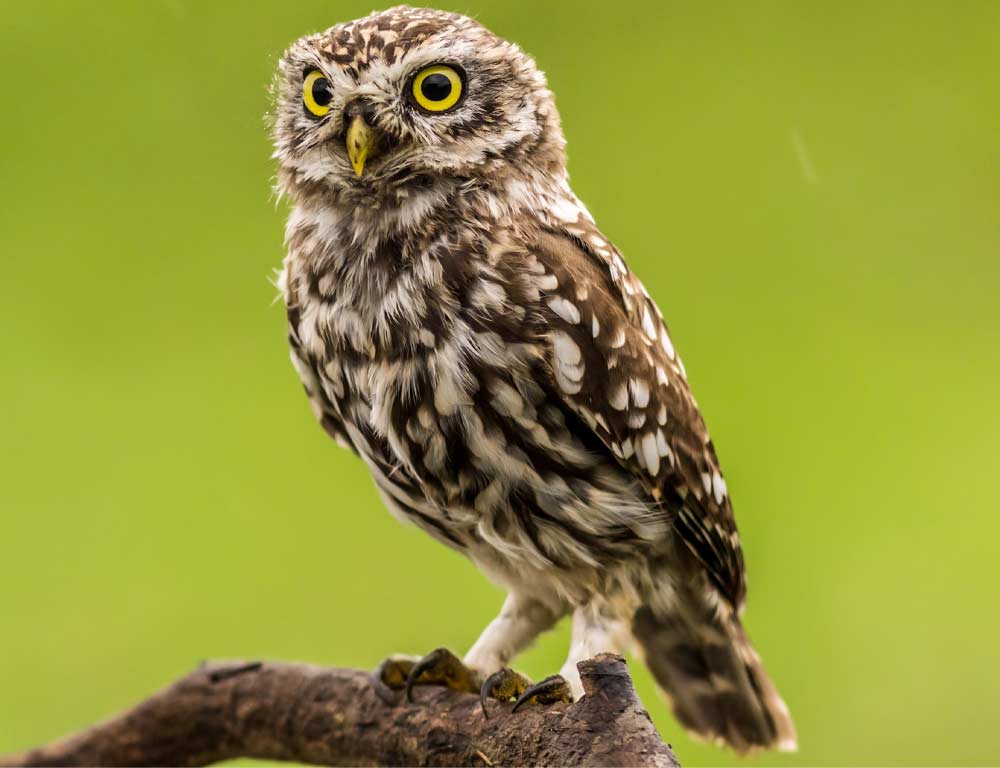
- Scientific name: Micrathene whitneyi
- Life span: 3-4 years
- Size: 5-6 inches
- Weight: 1.5-2 ounces
- Wingspan: 9-10 inches
- Status: Common
The Elf Owl, the smallest owl in the world, is native to Arizona’s Sonoran and Chihuahuan deserts.
These tiny owls have a distinctive appearance: short tails, large eyes, and a grayish-brown plumage. Elf Owls are cavity nesters, utilizing tree hollows or even abandoned woodpecker nests.
Being primarily insectivorous, Elf Owls feed on various insects, including moths, beetles, and scorpions. They are highly adaptable and can be found in arid desert regions with adequate vegetation for nesting.
Elf Owls are nocturnal, and their calls often include a series of high-pitched whistles. Despite their diminutive size, Elf Owls are vital in controlling insect populations in their habitats.
5. Long-eared Owl
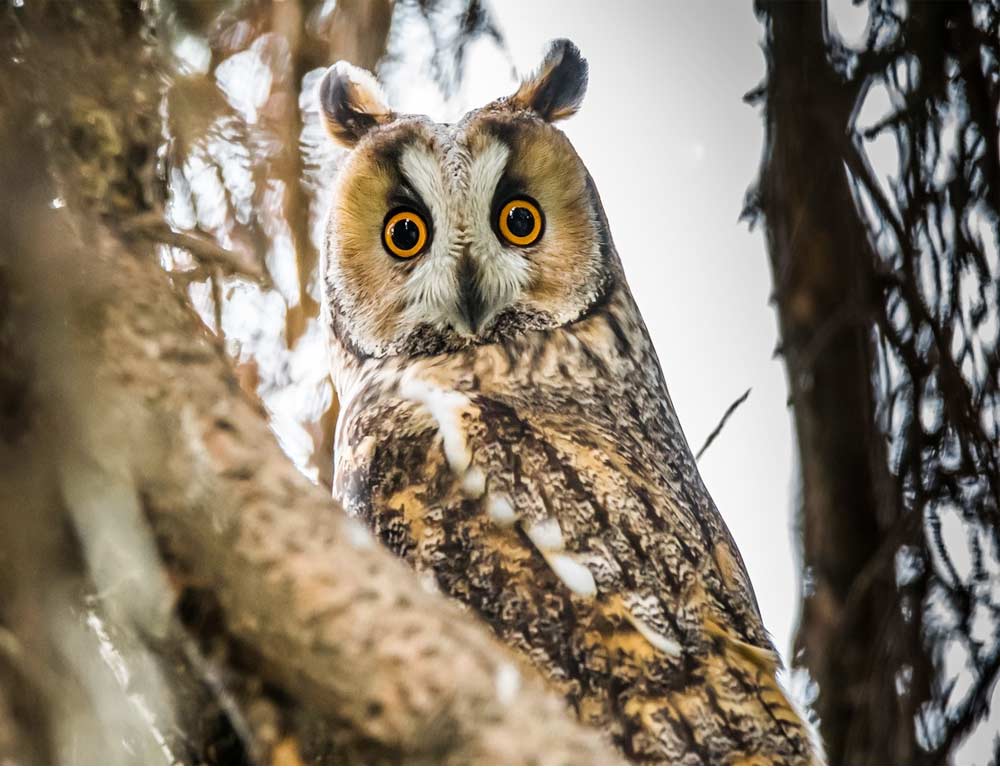
- Scientific name: Asio otus
- Life span: 4-10 years
- Size: 13-16 inches
- Weight: 7-26 ounces
- Wingspan: 35-42 inches
- Status: Common
The Long-eared Owl is characterized by its prominent “ear” tufts, which are actually feather extensions.
These owls are found in woodlands and forests and have a mottled brown appearance, providing excellent camouflage against tree bark. Long-eared Owls prefer dense foliage for roosting and nesting.
Long-eared Owls primarily hunt small mammals such as mice, voles, and shrews. Nocturnal hunters often rely on stealth and surprise when capturing their prey.
During the day, they roost in secluded locations to avoid detection. Although common, Long-eared Owls can be elusive due to their cryptic plumage and preference for dense habitats.
6. Whiskered Screech Owl
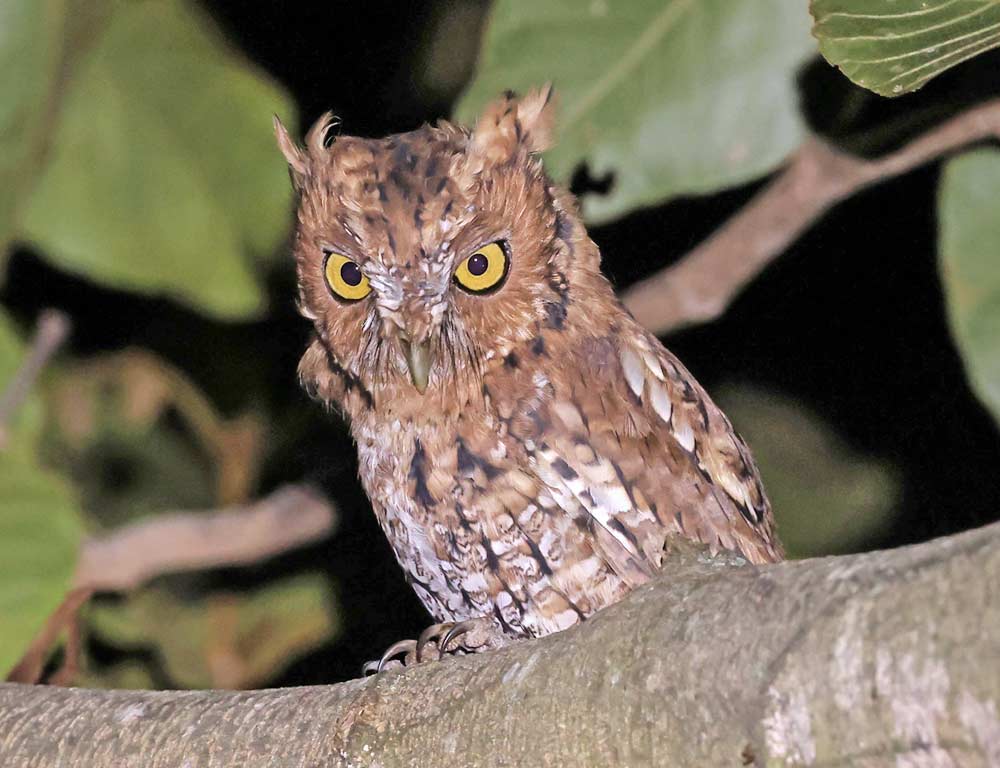
- Scientific name: Megascops trichopsis
- Life span: 4-5 years
- Size: 7-8 inches
- Weight: 3-7 ounces
- Wingspan: 18-24 inches
- Status: Common
The Whiskered Screech Owl, a small owl species with distinctive facial markings, is found in riparian woodlands and canyons.
Their plumage varies from reddish-brown to gray, providing effective camouflage in their preferred habitats. These owls are cavity nesters, utilizing tree hollows for shelter.
Whiskered Screech Owls primarily feed on insects, small mammals, and occasionally birds.
Their vocalizations include a series of soft trills and whistles, and they are known for their adaptability to both natural and human-altered environments.
Conservation efforts are essential to maintain suitable habitats for these charming owls in Arizona.
7. Western Screech Owl
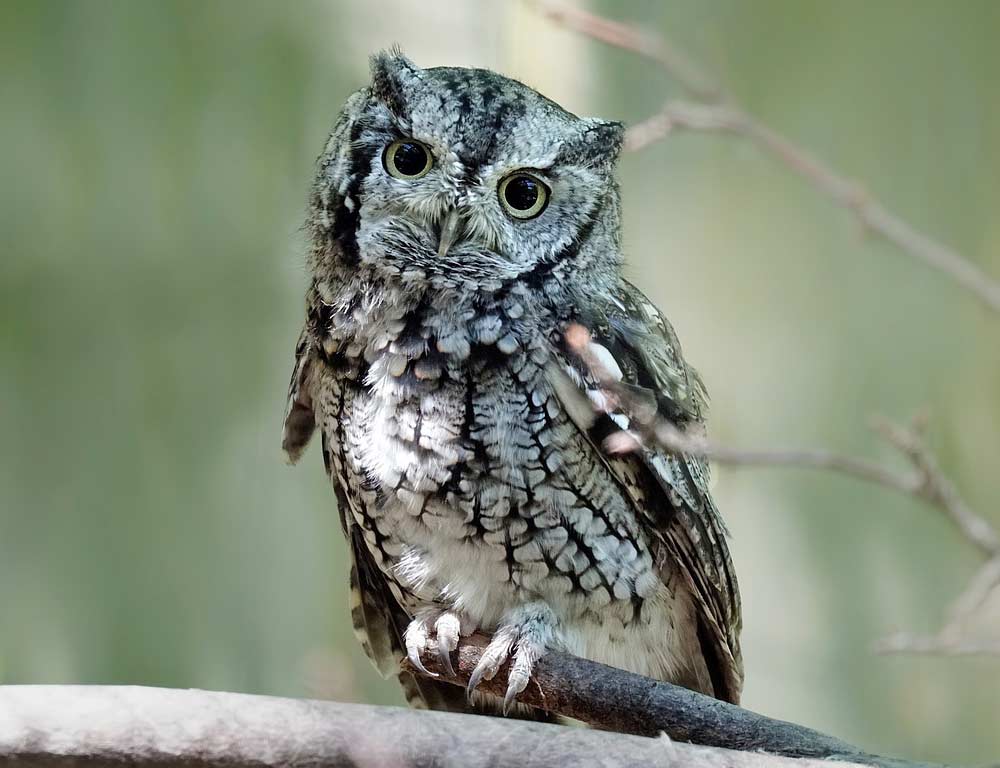
- Scientific name: Megascops kennicottii
- Life span: 5-10 years
- Size: 8-10 inches
- Weight: 6-9 ounces
- Wingspan: 21-24 inches
- Status: Common
The Western Screech Owl, a versatile species, can be found in various habitats, including woodlands, deserts, and urban areas.
Their plumage ranges from gray to reddish-brown, providing effective camouflage in diverse environments. These owls are cavity nesters, utilizing tree hollows or artificial structures.
Western Screech Owls feed on various prey, including insects, small mammals, and birds. They are primarily nocturnal hunters and rely on their keen vision and sharp talons for successful hunts.
These owls are known for their whistling calls, which can vary among individuals.
Despite their adaptability, Western Screech Owls may face threats from habitat loss, making conservation efforts crucial for their continued presence in Arizona.
8. Spotted Owl
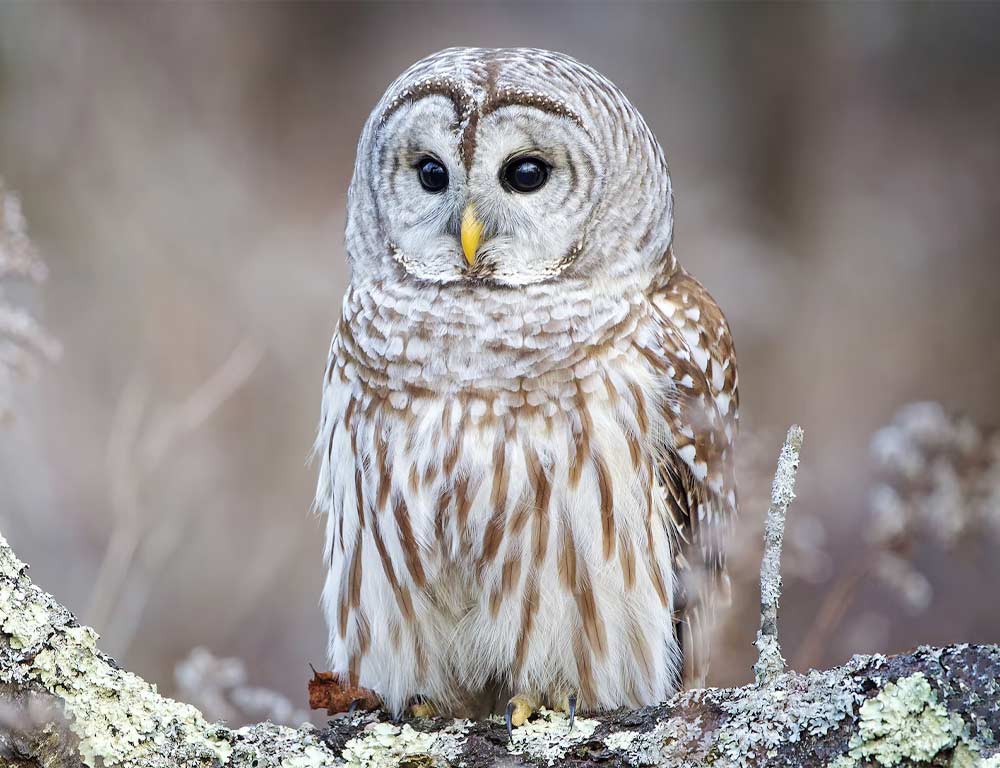
- Scientific name: Strix occidentalis
- Life span: 4-6 years (wild); up to 20 years (captivity)
- Size: 17-19 inches
- Weight: 1-2 pounds
- Wingspan: 40-46 inches
- Status: Threatened or Endangered
The Spotted Owl is an iconic and threatened species, often associated with old-growth forests in Arizona. Their plumage features distinct brown and white spots, providing effective camouflage among trees.
Spotted Owls are known for their territorial behavior and tend to occupy territories year-round. These owls primarily feed on small mammals, such as flying squirrels and woodrats.
Their nocturnal habits and reliance on mature forests make them particularly sensitive to habitat loss. Conservation efforts are critical to address the ongoing threats to their habitats, including logging and wildfires.
9. Flammulated Owl
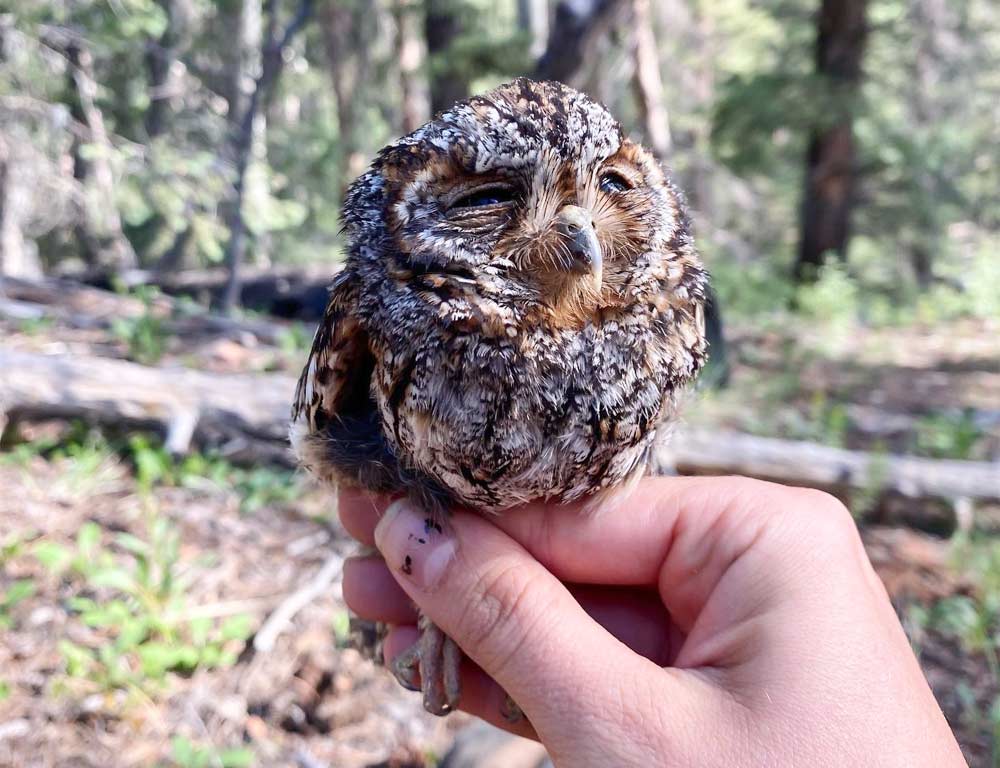
- Scientific name: Psiloscops flammeolus
- Life span: 2-5 years
- Size: 6.5-7 inches
- Weight: 1.5-2 ounces
- Wingspan: 16-18 inches
- Status: Least Concern
The Flammulated Owl is a small, migratory owl that breeds in Arizona’s coniferous and mixed woodlands. Named for its flame-like markings, these owls are masters of camouflage, blending seamlessly with tree bark.
They are known for their unique vocalizations resembling a series of hoots and whistles. Feeding primarily on insects, especially moths and beetles, Flammulated Owls are effective nocturnal hunters.
During migration, they may travel long distances between breeding and wintering grounds. Conservation efforts focus on preserving their nesting habitats and migration routes.
10. Northern Saw-whet Owl
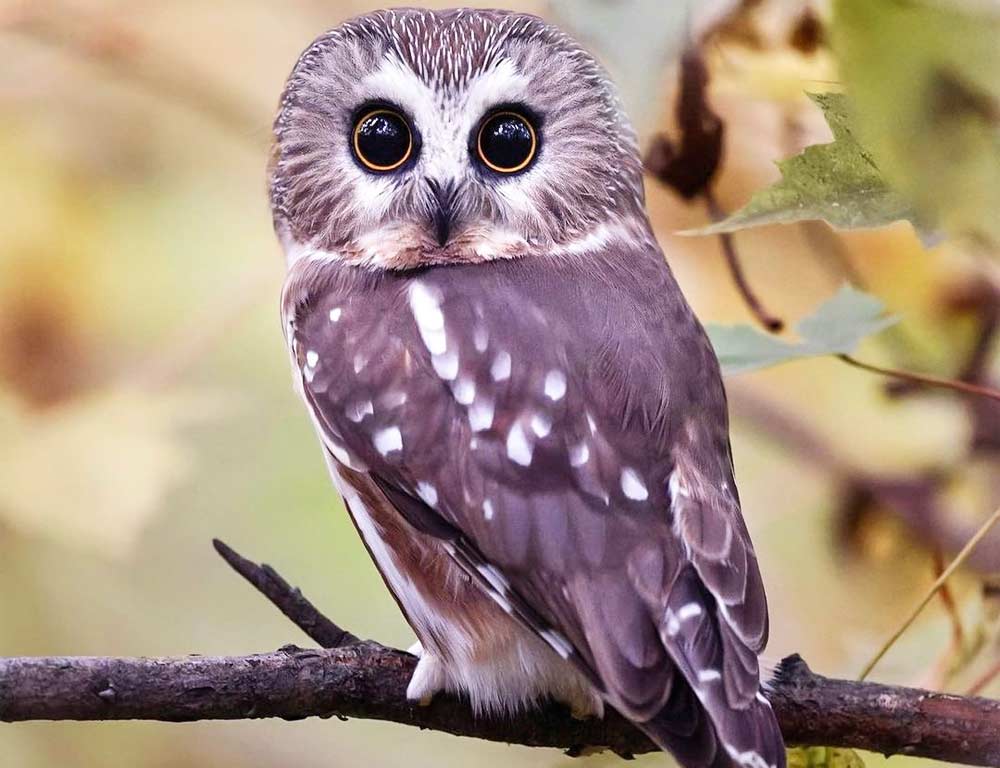
- Scientific name: Aegolius acadicus
- Life span: 3-5 years
- Size: 7-8 inches
- Weight: 2-5 ounces
- Wingspan: 16-18 inches
- Status: Least Concern
The Northern Saw-whet Owl is a small owl species with a distinctive appearance, characterized by its large head and bright yellow eyes.
These owls are found in various forested habitats, including coniferous and mixed woodlands. They are named for their repetitive, high-pitched “sawing” calls.
Feeding primarily on small mammals like mice and voles, Northern Saw-whet Owls are efficient nocturnal hunters. They often roost in dense vegetation during the day, using their cryptic plumage for camouflage.
Despite being widespread and generally adaptable, conservation efforts focus on understanding and addressing potential threats to their populations.
11. Short-eared Owl
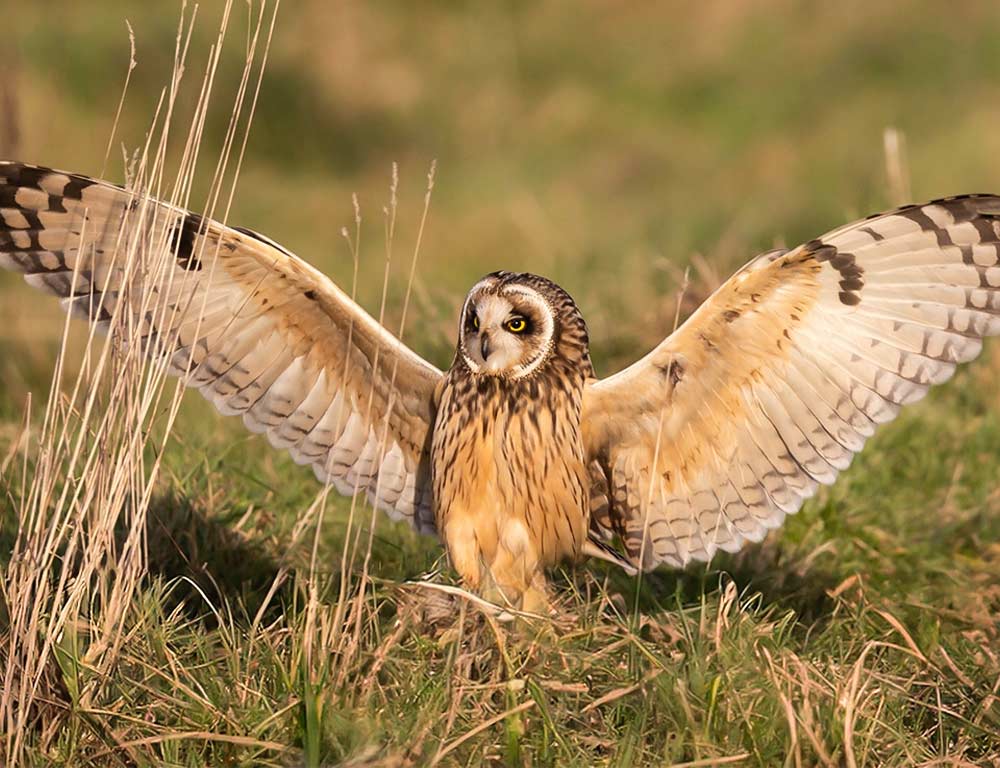
- Scientific name: Asio flammeus
- Life span: 4-6 years
- Size: 13-17 inches
- Weight: 7-17 ounces
- Wingspan: 33-43 inches
- Status: Least Concern
The Short-eared Owl is named for its distinctive short ear tufts. This species is found in various open habitats, including grasslands, marshes, and tundra. They have a mottled brown appearance, providing effective camouflage in their surroundings.
Short-eared Owls are crepuscular, meaning they are most active during dawn and dusk. They primarily feed on small mammals like voles and mice, often hunting by flying low over open fields.
Unlike many other owls, Short-eared Owls are known for their diurnal hunting habits. Conservation efforts for this species involve protecting their nesting and roosting sites in open landscapes.
12. Ferruginous Pygmy Owl
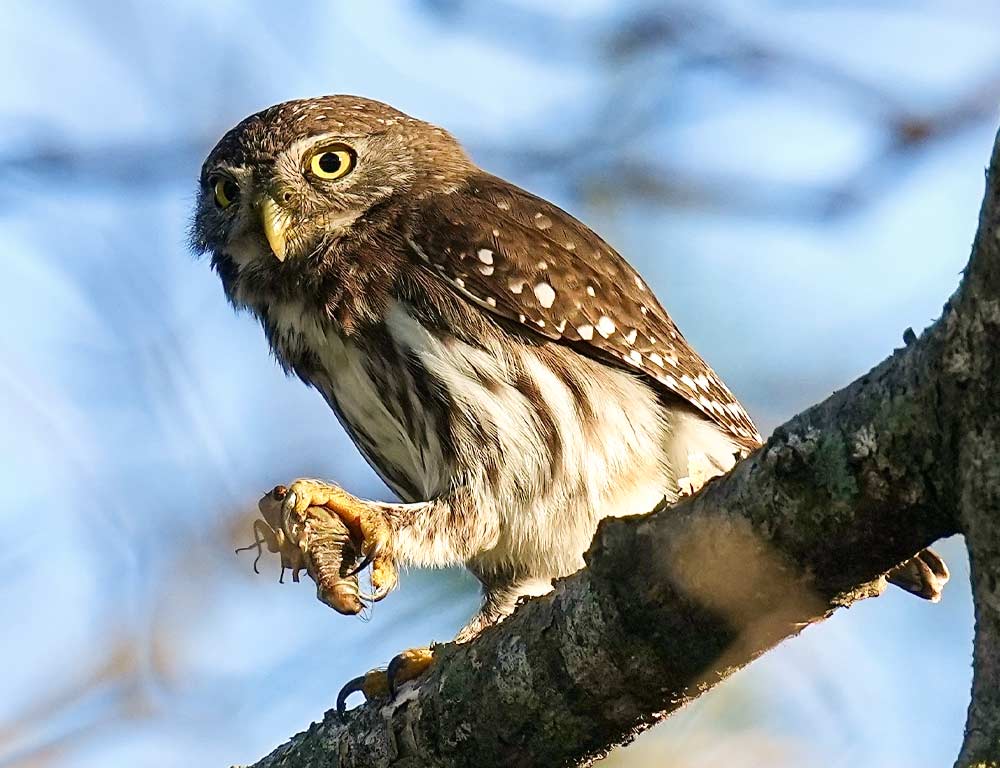
- Scientific name: Glaucidium brasilianum
- Life span: 3-5 years
- Size: 6-7 inches
- Weight: 2-3 ounces
- Wingspan: 12-14 inches
- Status: Least Concern
The Ferruginous Pygmy Owl is a small owl with reddish-brown plumage and a characteristic white eyebrow stripe. Found in a variety of habitats, including woodlands, scrublands, and semi-open areas, these owls are agile hunters.
Feeding primarily on insects, small mammals, and birds, Ferruginous Pygmy Owls are skilled at capturing prey on the wing.
They are also known for their vocalizations, which include a series of whistles and trills. Conservation efforts aim to maintain suitable habitats and address potential threats, including habitat loss and urbanization.
13. Northern Pygmy Owl
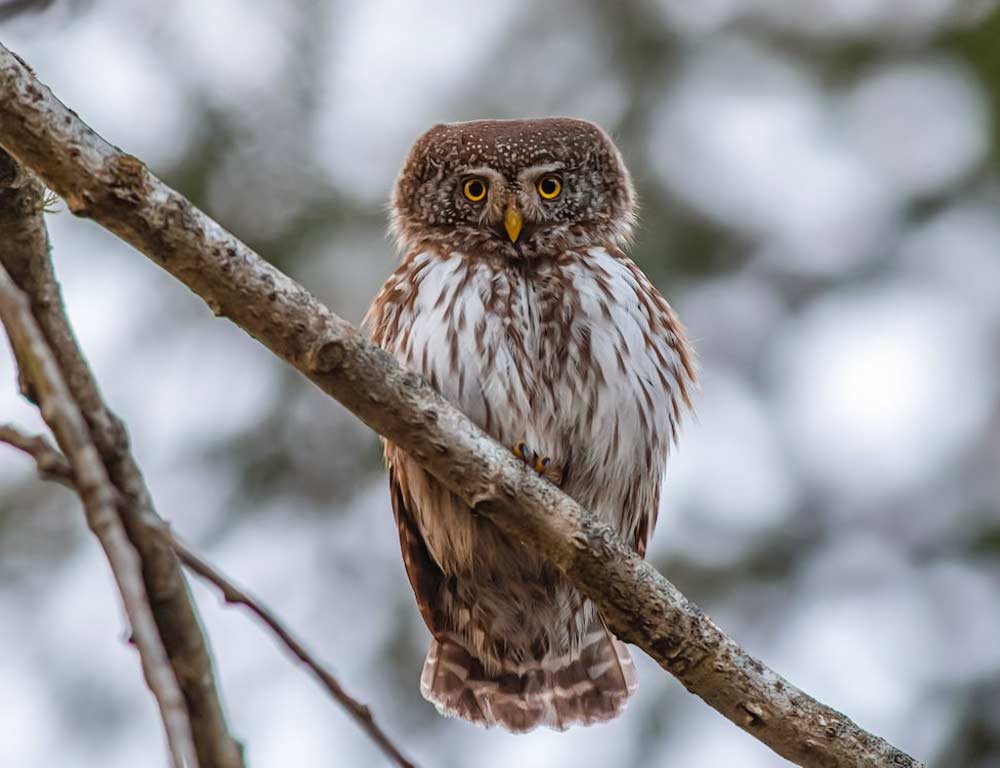
- Scientific name: Glaucidium californicum
- Life span: 3-7 years
- Size: 6-7 inches
- Weight: 2-3 ounces
- Wingspan: 12-14 inches
- Status: Least Concern
The Northern Pygmy Owl is a small owl with a rounded head and no ear tufts. Found in coniferous and mixed woodlands, these owls have a distinctive appearance with spotted and streaked plumage.
Northern Pygmy Owls primarily feed on small birds and mammals. Despite their small size, they are bold predators and have been known to take prey larger than themselves.
They are also diurnal hunters, making them more active during the day than many other owl species. Conservation efforts for the Northern Pygmy Owl focus on protecting their forested habitats and ensuring the availability of suitable prey.
14. Mexican Spotted Owl
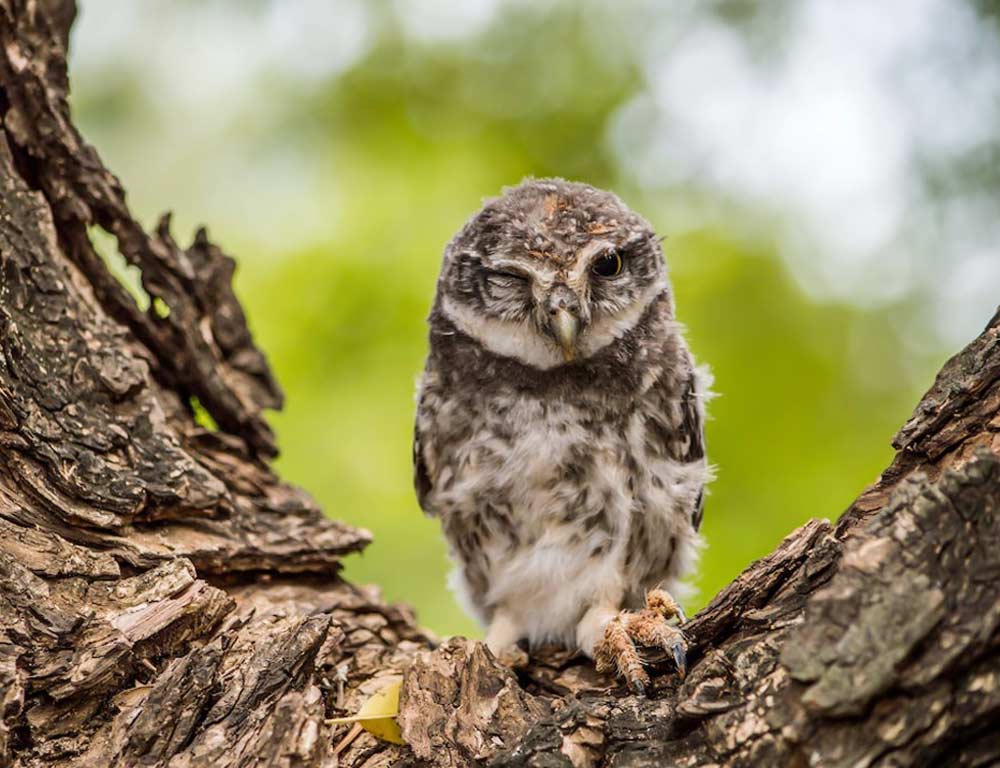
- Scientific name: Strix occidentalis lucida
- Life span: 10-15 years
- Size: 17-19 inches
- Weight: 1-2 pounds
- Wingspan: 40-46 inches
- Status: Threatened
The Mexican Spotted Owl is a subspecies of the Spotted Owl, adapted to southwestern mountainous regions, including parts of Arizona.
These owls inhabit mature forests and canyons, relying on old-growth trees for nesting sites. Their plumage is characterized by brown and white spots, providing excellent camouflage.
Mexican Spotted Owls primarily feed on small mammals and birds. They are known for their territorial behavior and are often associated with steep, rugged terrain.
Conservation efforts are crucial due to habitat loss, logging, and other factors threatening their existence. Protection of old-growth forests is essential to ensure the survival of the Mexican Spotted Owl in Arizona.
15. Pygmy Owls
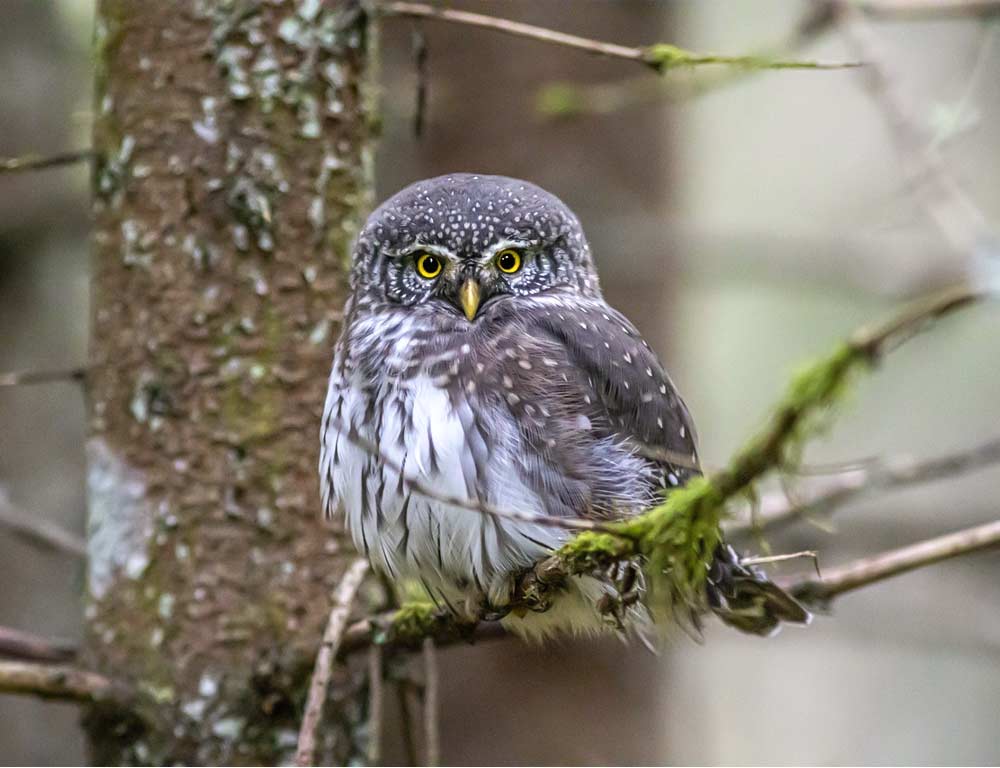
Pygmy Owl refers to several species, including the Ferruginous Pygmy Owl and the Northern Pygmy Owl.
Pygmy owls, including species like the Ferruginous Pygmy Owl and Northern Pygmy Owl, are small-sized owls found in various habitats, from woodlands to scrublands. They are characterized by their small stature, rounded heads, and bold markings.
Feeding on insects, small mammals, and birds, pygmy owls are agile hunters. Their small size allows them to navigate dense vegetation in search of prey.
Conservation efforts for pygmy owls focus on preserving diverse habitats and addressing potential threats like habitat loss and urbanization.
16. Mountain Pygmy Owl
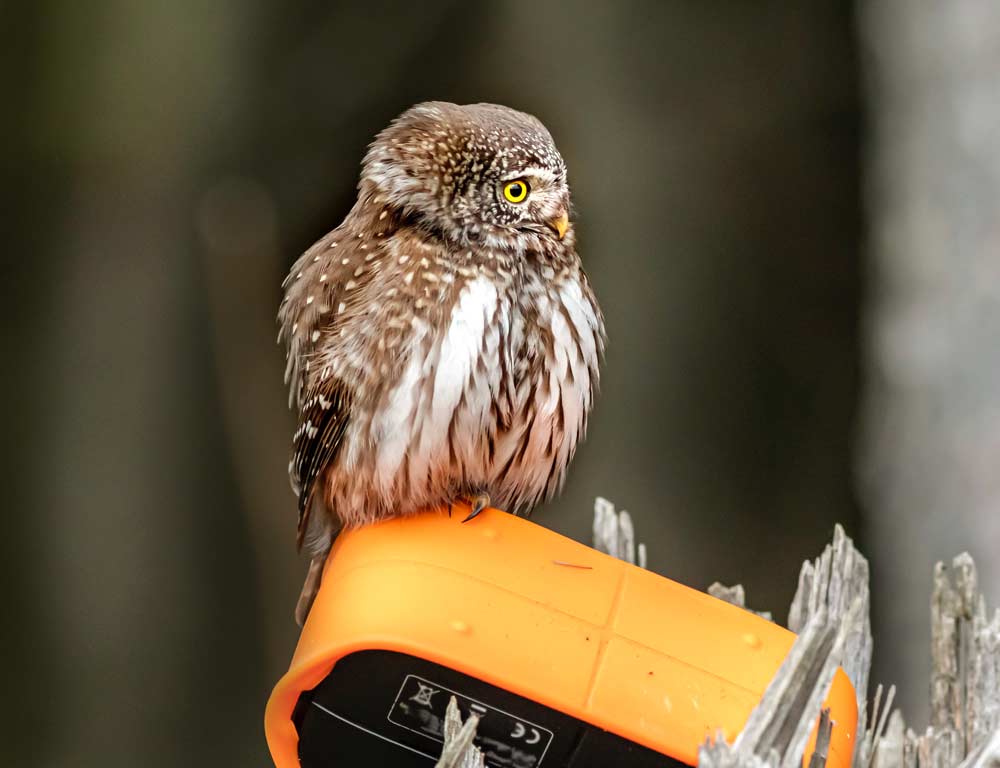
- Scientific name: Glaucidium gnoma
- Life span: 7-10 years
- Size: 6-7 inches
- Weight: 2-3 ounces
- Wingspan: 12-14 inches
- Status: Least Concern
The Mountain Pygmy Owl is a small owl species found in mountainous regions, including coniferous forests in Arizona. They have a rounded head, no ear tufts, and distinctive white spots on their dark plumage.
Mountain Pygmy Owls primarily feed on small birds and mammals. They are diurnal hunters and are known for their ability to take prey larger than themselves.
Their habitat preferences include dense forests with coniferous trees. Conservation efforts for the Mountain Pygmy Owl involve maintaining healthy forest ecosystems and protecting against potential threats such as logging and habitat fragmentation.
Wrapping Up
The Owls of Arizona embody a captivating tapestry of species, each contributing to the state’s ecological diversity.
From the iconic Great Horned Owl to the elusive Northern Saw-whet Owl, these birds play vital roles in maintaining ecological balance.
While some face threats, conservation efforts are essential to ensure the survival of these fascinating creatures.
As we delve into their varied lifestyles and habitats, it becomes clear that preserving Arizona’s owl populations is a testament to their resilience and a responsibility for future generations to cherish the wild beauty of these nocturnal wonders. Stay focused.